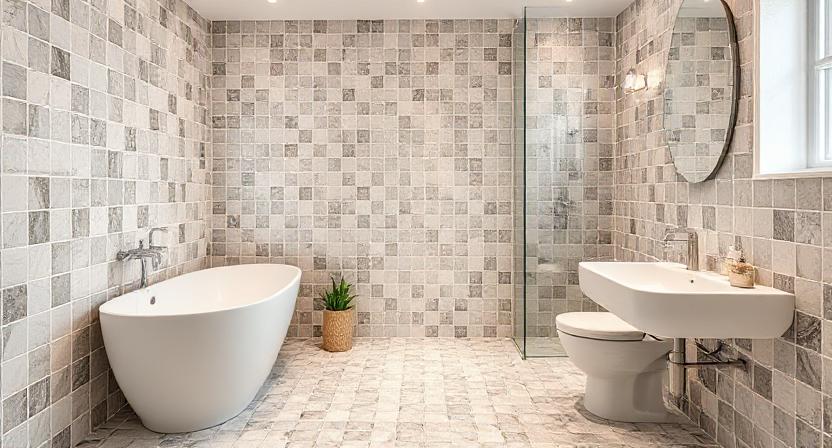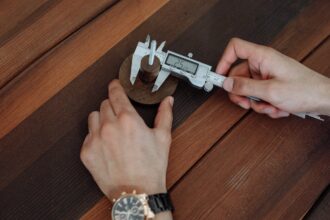Technology is finding its way into every corner of our homes, and the bathroom is no exception. What was once a purely functional space has evolved into a smart, connected environment designed for comfort, convenience, and efficiency. The Internet of Things, or IoT, is at the heart of this transformation, allowing our showers, mirrors, lighting, and even toilets to communicate and respond to our preferences. For many households in the UK, the connected bathroom is no longer just a luxury—it’s quickly becoming an integral part of modern living.
The Morning Rush Meets Smart Technology
Few moments are as universally stressful as the morning routine. Between racing against the clock and trying to prepare for the day ahead, every minute counts. This is where IoT-enabled bathroom technology steps in, taking the edge off those early hours. Imagine stepping into your bathroom and finding it already at the perfect temperature, with your favourite morning playlist softly playing and the mirror gently illuminated to suit the time of day.
Connected bathrooms use smart devices that can be controlled through apps or voice assistants, such as Amazon Alexa or Google Home. Many of these devices can be programmed to sync with your alarm, so when you wake up, the room is already ready for you. Heated floors switch on automatically, lighting adjusts to a soft glow to avoid harsh brightness, and your shower begins to heat the water to your preferred temperature. It’s a level of personalisation that redefines what comfort means in the home.
Smart Showers and Intelligent Water Control
One of the most popular innovations in connected bathrooms is the smart shower. These systems allow users to set precise temperatures and water pressure through smartphone apps or digital touch panels. Instead of wasting time running the tap and waiting for the right temperature, the shower reaches it instantly. Many models can even store individual profiles, so each family member gets their ideal experience with no adjustments needed.
In the UK, where water conservation is becoming an increasing concern, smart showers also help manage consumption. By tracking usage and flow, they can send reminders when showers exceed sustainable limits or automatically adjust flow rates to save water without compromising performance. It’s not just convenience—it’s sustainability built into your daily routine.
Lighting That Adjusts to You
Lighting has always played a major role in setting the tone for the day, but connected lighting systems take it to another level. Smart bulbs and integrated bathroom lighting can now mimic natural daylight, gradually brightening as you wake up to make mornings less jarring. During evening routines, lights can automatically dim to promote relaxation before bedtime.
IoT lighting systems can be paired with sensors that detect occupancy, ensuring the bathroom is only illuminated when needed. This level of control doesn’t just make life easier; it contributes to energy savings over time, something that resonates strongly with UK households aiming to reduce utility bills and environmental impact.
The Role of Smart Mirrors
Smart mirrors have become one of the defining features of modern connected bathrooms. More than just reflective surfaces, these mirrors are information hubs that can display everything from the time and weather to traffic updates and calendar reminders. For those who start their day with grooming or skincare routines, the convenience of having updates displayed right in front of you can’t be overstated.
Some models even integrate with fitness apps or body analysis tools, helping track hydration, sleep patterns, or weight trends. In essence, the bathroom mirror becomes part of a holistic approach to wellbeing. And when combined with clever lighting and anti-fog technology, it delivers a level of functionality that feels straight out of a science fiction film.
Smart Toilets and Hygiene Technology
Few innovations illustrate the potential of IoT in bathrooms quite like the smart toilet. Widely adopted in Japan and now gaining traction across Europe, these toilets include features like automatic lids, self-cleaning bowls, heated seats, and built-in bidet functions with adjustable settings. Some even use UV light to sterilise surfaces and air filters to reduce odours.
For households focused on hygiene—a topic that’s gained much attention in recent years—smart toilets are an impressive upgrade. They reduce the need for manual cleaning, lower paper waste, and make bathroom use more accessible for people with mobility challenges. The UK market is seeing steady growth in demand for these systems as people become more aware of their convenience and long-term benefits.
Heating, Ventilation, and Comfort
While smart showers and mirrors tend to steal the spotlight, connected heating and ventilation systems also play a vital role in modern bathrooms. IoT-enabled towel rails, underfloor heating, and extractor fans can be synced with room sensors and weather data. This ensures that your bathroom remains at a comfortable temperature year-round, while humidity is managed automatically to prevent mould growth.
The ability to preheat the room before stepping in or cool it down after a hot shower adds a layer of luxury that feels distinctly modern. For older UK homes, which can often suffer from temperature inconsistencies and poor ventilation, these systems provide both comfort and practicality.
Voice Control and Automation
The rise of voice assistants has made the connected bathroom even more intuitive. You can now ask your voice assistant to start the shower, dim the lights, play the news, or check your day’s appointments—all without touching a button. This hands-free control is not only convenient but also enhances hygiene, as you can interact with devices without physically handling them.
Automation is where the real magic happens. Using routines programmed through smart home platforms, your bathroom can operate almost entirely on autopilot. Wake-up sequences can trigger lighting, music, heating, and water flow in perfect harmony, tailored specifically to your daily schedule.
Integrating Design and Technology
It’s not just about functionality—the aesthetics of connected bathrooms are just as important. Designers are increasingly blending sleek digital features into modern interiors, ensuring that technology complements rather than dominates the space. Subtle LED strips, concealed touch panels, and integrated smart controls help maintain a minimalist appearance.
Tiles for bathrooms, once chosen purely for style and durability, now play a role in the overall design of tech-integrated spaces. High-quality porcelain or ceramic tiles with underfloor heating compatibility make for efficient and comfortable surfaces. Some even come with anti-slip textures and antibacterial finishes, aligning perfectly with the hygiene-focused ethos of modern smart bathrooms. The choice of tiles can also influence the overall atmosphere, whether it’s a spa-like retreat with natural stone effects or a contemporary space with glossy finishes and geometric patterns.
Energy Efficiency and Environmental Responsibility
The push towards sustainability is one of the most significant driving forces behind the IoT bathroom trend. Smart systems help monitor and reduce resource consumption, from water to electricity. For example, connected thermostats can ensure heating is only active when the bathroom is occupied, while LED lighting and efficient water heaters cut down on unnecessary energy waste.
For eco-conscious homeowners in the UK, these technologies offer a way to combine comfort with responsibility. With energy prices remaining a key concern, the ability to track and adjust usage through mobile apps gives greater control over household spending while supporting long-term environmental goals.
Wellness and the Digital Spa Experience
Another benefit of bathroom technology is its contribution to personal wellbeing. The bathroom has evolved from a place of simple hygiene into a sanctuary for relaxation and self-care. Smart features such as chromotherapy lighting, aromatherapy diffusers, and integrated sound systems can transform the space into a private spa.
Some high-end systems now include water temperature mapping, steam control, and even mood-setting presets designed to relax muscles or invigorate the senses. Whether you’re winding down after a long day or trying to energise yourself in the morning, IoT-based wellness features ensure that your bathroom supports your physical and mental wellbeing.
Security and Maintenance Benefits
Beyond comfort and convenience, connected bathrooms also bring practical benefits in terms of maintenance and safety. Leak detection sensors can identify and alert homeowners to potential water issues before they escalate, preventing costly damage. Smart ventilation systems monitor humidity levels and automatically adjust airflow, reducing the risk of mould and dampness.
Some systems even offer predictive maintenance alerts, letting you know when a component—such as a water heater or pump—requires servicing. This proactive approach not only extends the lifespan of your bathroom fittings but also saves time and money on repairs.
The Growing Popularity of Smart Bathrooms in the UK
Across the UK, interest in connected home technology has surged, and bathrooms are fast becoming the next frontier. Homeowners are recognising the benefits of combining functionality with technology to make daily routines smoother and more enjoyable. The pandemic years also accelerated investment in home upgrades, with many people looking to bring luxury and efficiency into their everyday spaces.
Leading bathroom brands and smart home developers are responding with innovative products designed for British homes, often compatible with existing plumbing and electrical systems. The integration of technology into design has become more seamless than ever, making smart bathrooms an attainable reality for households of all sizes.
Looking Ahead: The Future of Connected Bathrooms
As IoT continues to advance, the potential for connected bathrooms is almost limitless. Artificial intelligence may soon anticipate user needs even before commands are given, learning from routines and preferences. Touchless interfaces, voice-activated taps, and biometric recognition systems will make bathrooms safer, more efficient, and more personal.
For interior designers, the challenge will be to balance innovation with timeless design, ensuring that these high-tech spaces remain beautiful as well as practical. Materials such as tiles for bathrooms will continue to evolve too, with advancements in coatings and finishes complementing the smart systems they support.
The connected bathroom represents a fusion of technology, design, and wellbeing—a place where innovation genuinely enhances everyday life. From the moment you wake up to the moment you wind down, IoT is quietly working behind the scenes, making mornings easier, evenings calmer, and homes across the UK more intelligent than ever before.

















